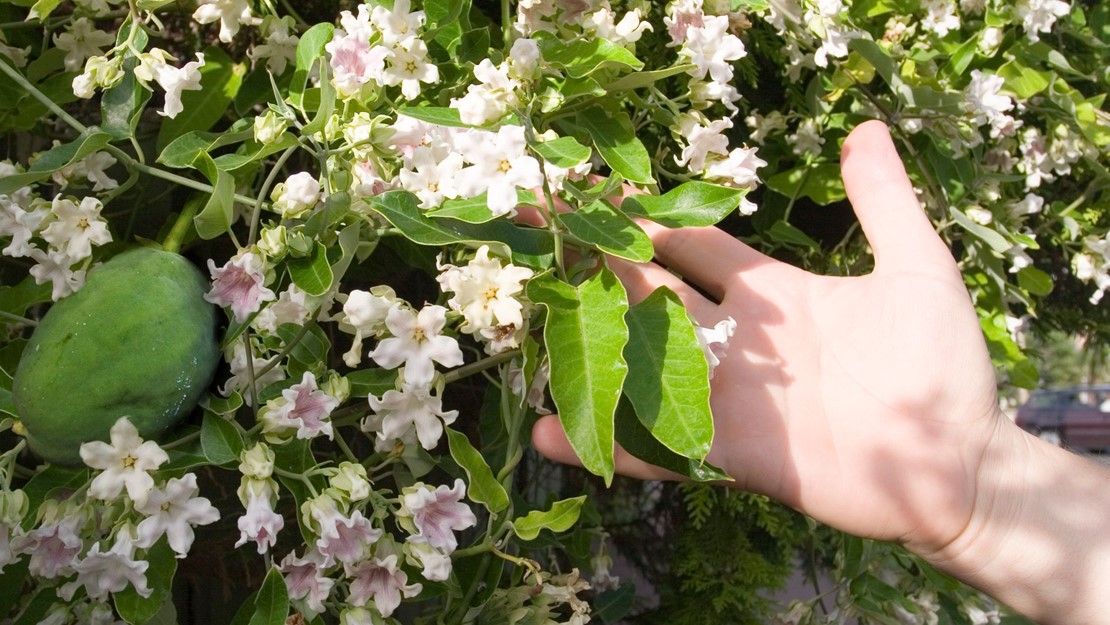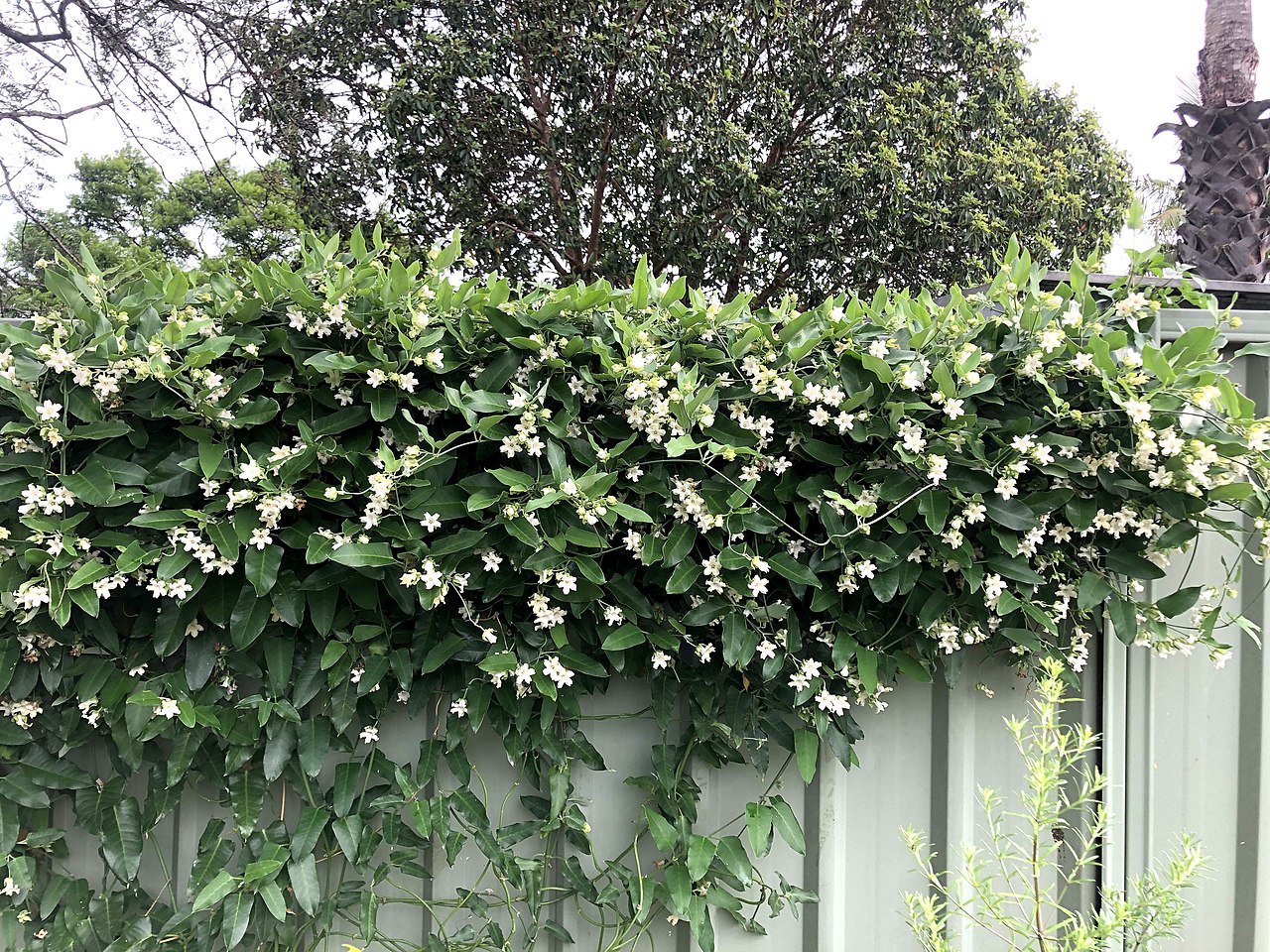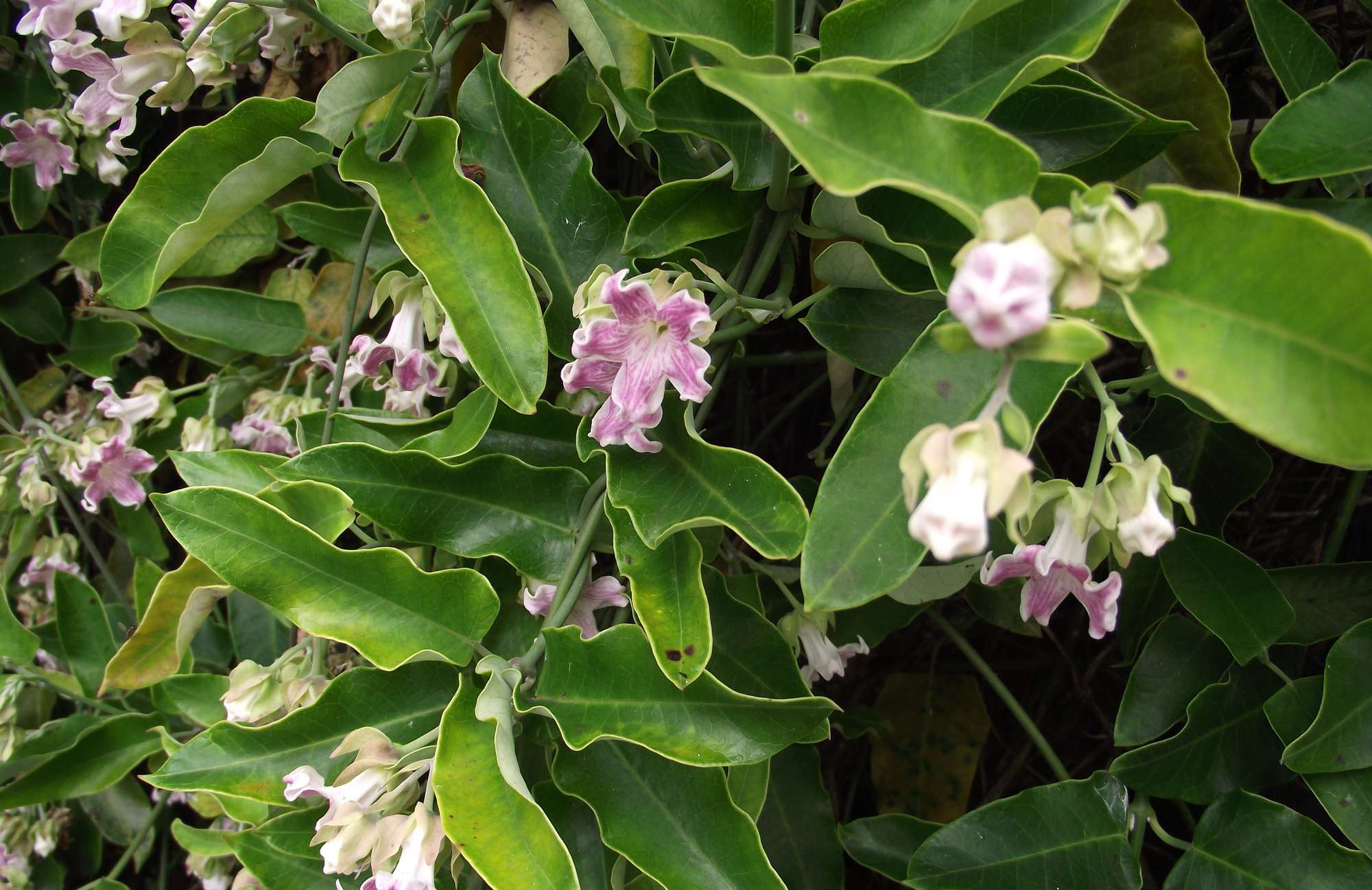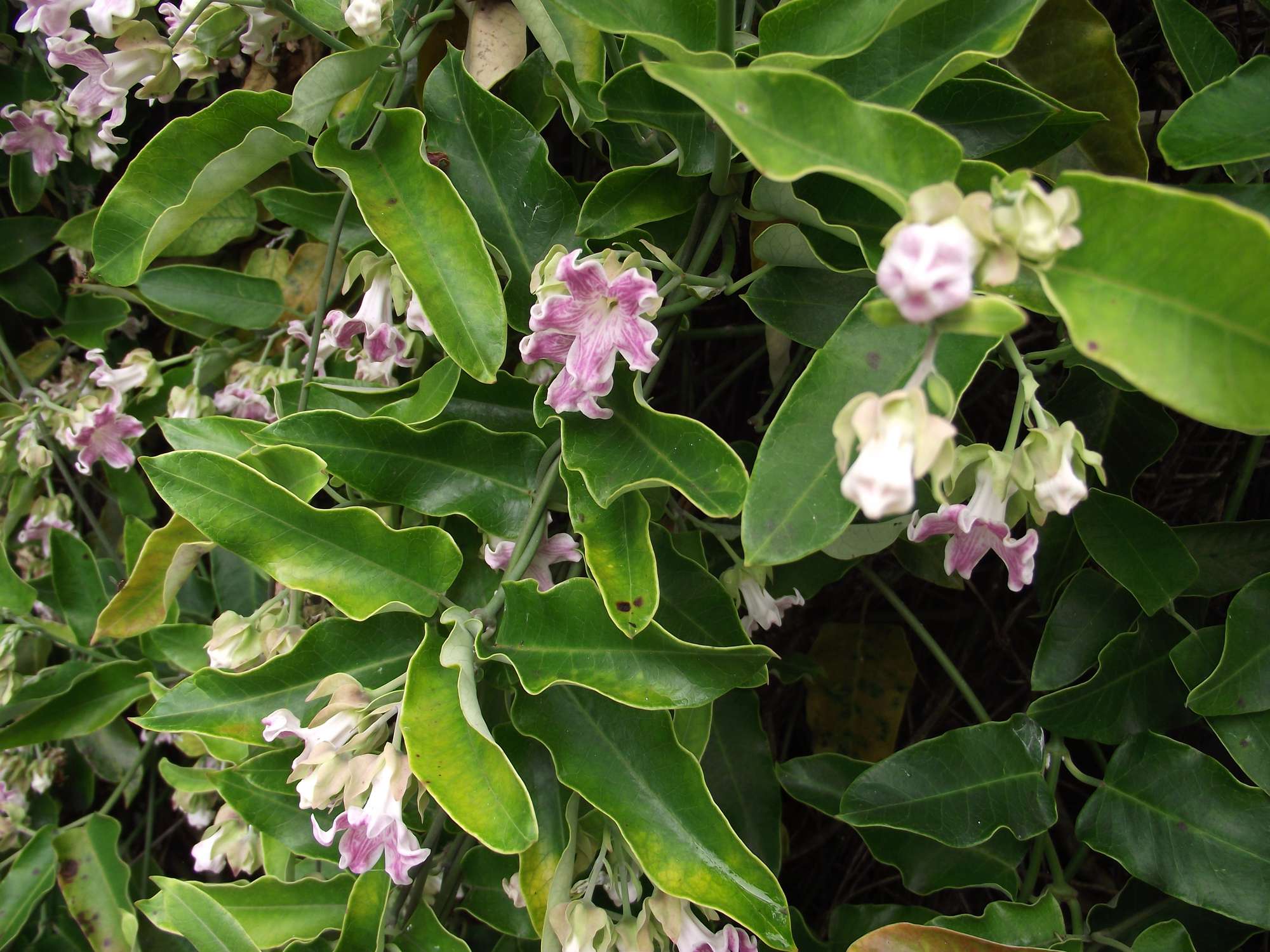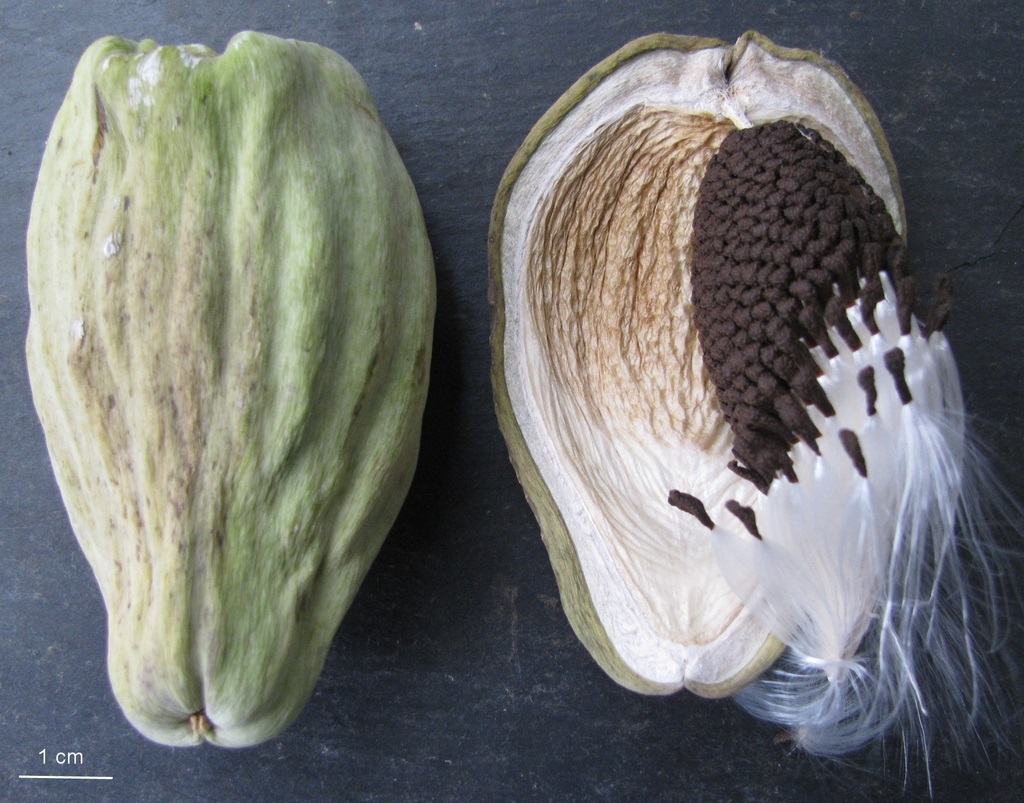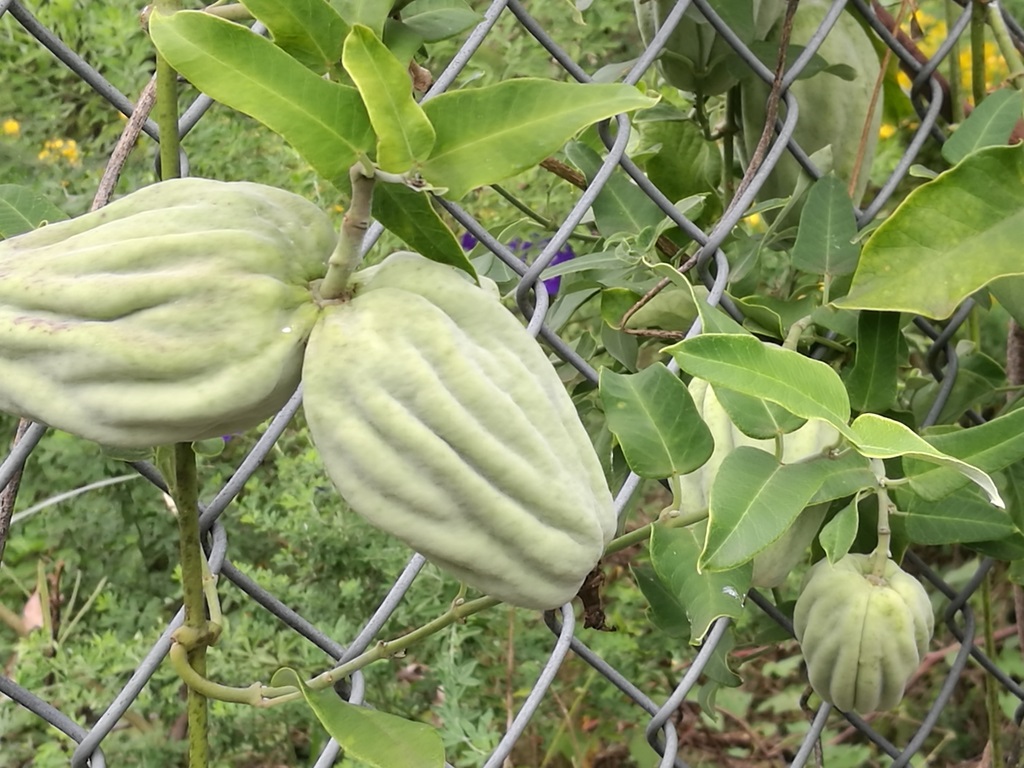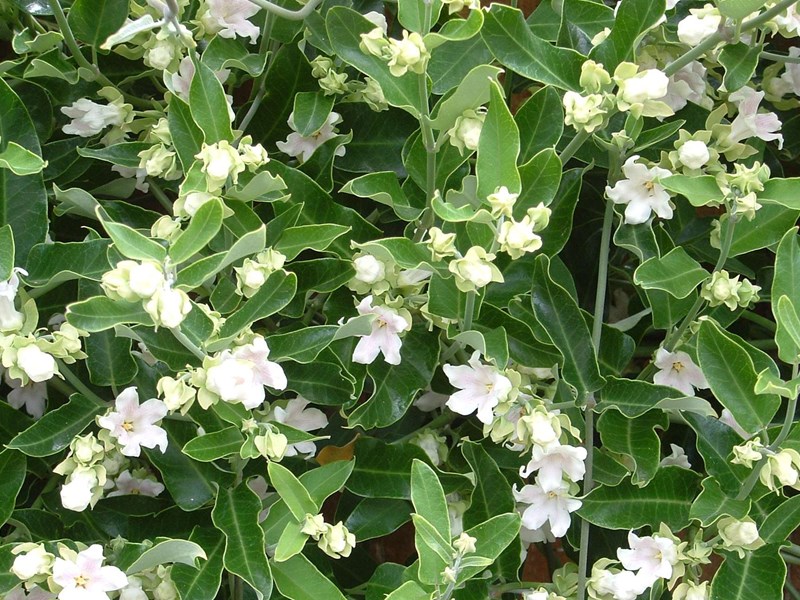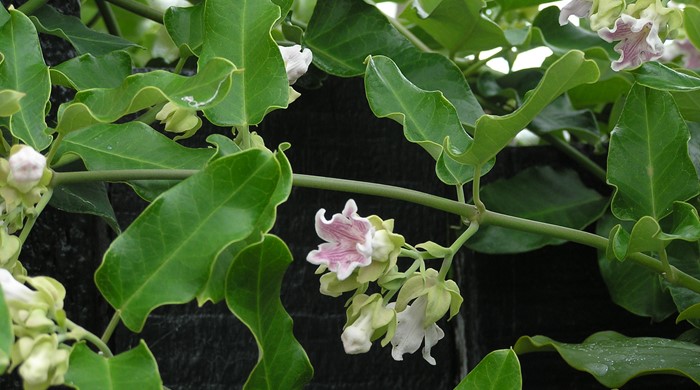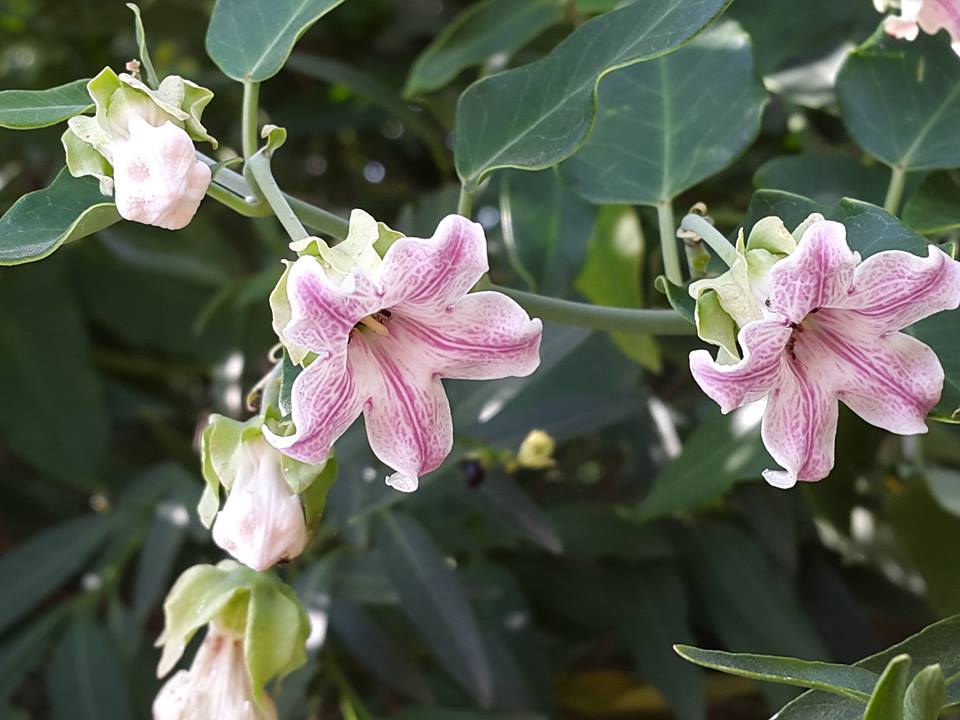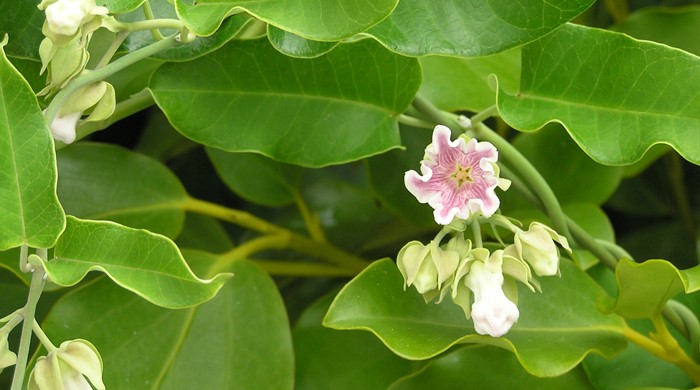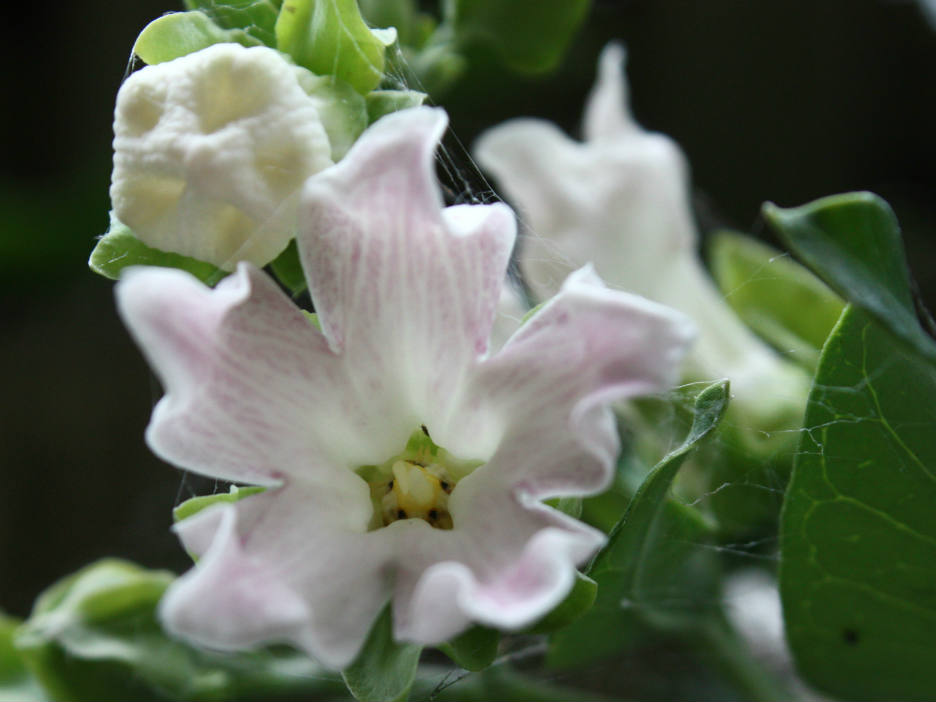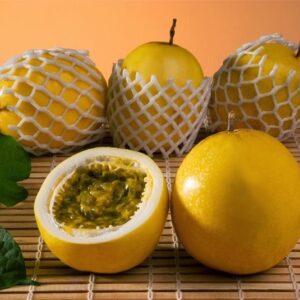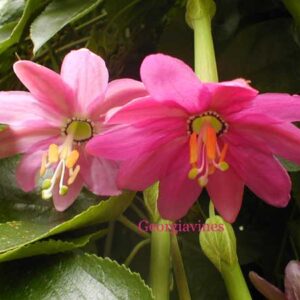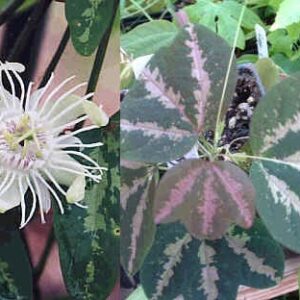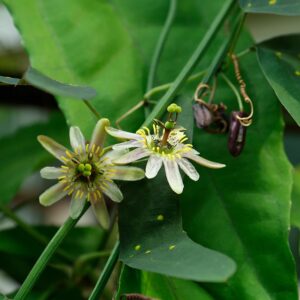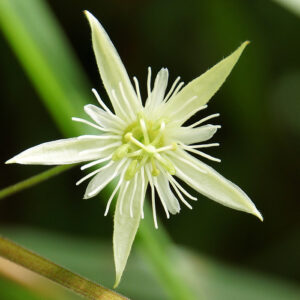توضیحات
Araujia sericifera is a perennial vining plant in the genus Araujia, of the family Apocynaceae. The species was described in 1817 by the Portuguese botanist Félix de Avelar Brotero. The synonym Araujia hortorum is in more frequent use in New Zealand. Its common names include moth plant, white bladderflower, common moth vine, cruel vine, and false choko
Its attractive and abundant fragrant flowering make it a specimen worth cultivating. Its strong robustness combined with high seed production can make it invasive in certain environments, but not in France due to its sensitivity to frost
Araujia sericifera is a creeping vine that can climb up to 5–10 metres (16–33 ft) high. When broken it releases a milky, smelly exudate. Leaves are opposite, dark green, glossy and quite fleshy, almost triangular, with entire margins, about 10–12 centimetres (3.9–4.7 in) long and 1–6 centimetres (0.39–2.36 in) wide with an intact leaf margin. The upper side is dark green, bare and shiny, the underside is grey-green with felt-like hairs. When a stem, leaf or unripe fruit is broken, a white milky juice is produced at the breaking point. It is slightly toxic and can cause an allergic skin reaction when touched
The stems are thin and right-winding. They branch strongly and can lignify at the base. The plant usually wraps itself around other plants or around a post or the bars of a fence. The root system consists of a short taproot with superficial lateral roots. The plant’s stems and leaves may senesce in late summer or early autumn, but new shoots will grow on the old stems as climbing support
The twining stems feature scented, cup-shaped bisexual flowers, around 2 centimetres (0.79 in) in width, with five white, cream-coloured, violet or pale pink petals. The flowers are generally pollinated by moths (hence the name “moth plant”), butterflies and bees (entomophily), but they can self-pollinate. The flowering period extends from late spring to summer. The flowers of Araujia sericifera resemble those of Stephanotis floribunda in some respects, a vine that also belongs to the dogbane family
The pear-shaped fruits are large pods, about 8–10 centimetres (3.1–3.9 in) long. They contain many black seeds attached to silky hairs that enable them to be distributed by the wind. The fruits outwardly resemble those of chayote or choko (Sechium edule), hence the name false choko. It has minor edible uses and has been used a a fibre for making textiles
پیچک یاس شاپرک گونه ای بالارونده از خانواده آپوکیناسه است
این پیچک گل های سفید تا صورتی خوشبویی دارد
همانند دیگر گیاهان این خانواده اگر شاخه شکسته شود شیره سفید رنگی از آنها بیرون می آید
میوه های گلابی مانند آن کمی شبیه میوه چایوت هستند. در منابع ، مصرف خوراکی محدود میوه ها بعد از فرآوری ذکر شده است ولی ما آن را توصیه نمی کنیم چون خام آن خوراکی نیست:
https://pfaf.org/user/Plant.aspx?LatinName=Araujia+sericifera
